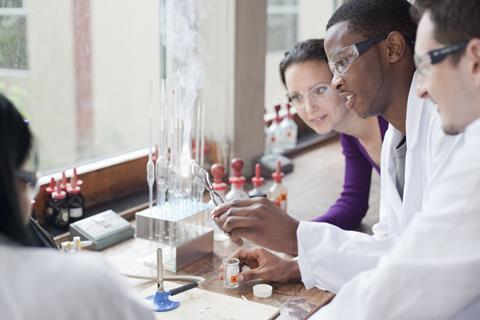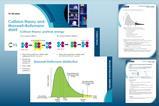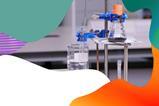Linking lessons to the real world can help students engage with science – and help them pass chemistry exams

Great contexts can bring chemistry to life. Links to the real world make chemistry lessons more engaging and meaningful for students. Different contexts at the start of a topic promote discussion and help hook students into the subject. They can also be used when introducing practical activities. Using of a range of different relevant science contexts also contributes to building science capital. Science capital is a concept that helps us understand why some young people participate in post-16 science and others don’t. Previous articles published in the Teaching practical science series provide different contexts that can be used while teaching practical skills and processes.
Contexts in the curriculum
Unsurprisingly when you read the GCSE or National 5 chemistry specification you will not find a list of novel contexts from which examiners write questions. If such a list did exist, the contexts would no longer be novel. However, there are plenty of good opportunities to introduce chemistry through a range of contexts. When we look at the exam board assessment objectives it is clear students must not only be able to recall key facts but they must be able to apply their knowledge to new and novel situations and analyse unfamiliar information and ideas; often within a practical situation (Table 1).
| GCSE sciences | National 5 chemistry |
|---|---|
|
AO1 (40%) Demonstrate knowledge and understanding of: scientific ideas; scientific techniques and procedures |
Breadth – drawing on knowledge and skills from across the course |
|
AO2 (40%) Apply knowledge and understanding of: scientific ideas; scientific enquiry, techniques and procedures |
Challenge – requiring greater depth or extension of knowledge and/or skills |
|
AO3 (20%) Analyse information and ideas to: interpret and evaluate; make judgements and draw conclusions; develop and improve experimental procedures |
Application – requiring application of knowledge and/or skills in practical and theoretical contexts as appropriate |
Progression of ideas
For students to successfully apply their knowledge and practical chemistry to unfamiliar contexts, they need to bring together their learning from different threads of ideas including chemical content, working scientifically, maths skills and scientific terminology.
Within each thread of ideas we want to see progression. Doing this successfully is demanding and students need to be able make connections between core ideas. So perhaps it’s not really a surprise to hear comments such as ‘We weren’t taught that’; ‘Q2 was not in the revision guide’; and ‘None of the topics I revised came up’ as students emerge from the exam room.
Many students are simply not able to make the multiple connections between the different threads of ideas. This may be because they:
- have gaps in their understanding of chemistry content or practical chemistry;
- are just trying to recall everything they have met before;
- cannot get beyond the context;
- have no meaningful experience of carrying out scientific enquiry;
- do not really understand the purpose of practical procedures and therefore unable to link to other areas of chemistry content.
In other words, when faced with new and novel contexts many students are just trying to recall examples, rather than trying to apply their chemistry. The result is they often fall at the first hurdle, when they fail to recognise what the question is really asking.
Making a soluble salt

All GCSE courses expect students to know how to make a soluble salt. This approach will help students to apply their learning to different contexts and develop their scientific writing by:
- making links to previously learnt key chemical facts
- supporting the sequencing of key ideas, practical techniques and processes
- supporting the use of science specific vocabulary
- learning about the uses of new salts
- consolidates learning
- develops self regulation
You might find it interesting to read Dylan William’s review paper Formative assessment and contingency in the regulation of learning processes, which does support this type of approach.
| Edexcel | AQA | OCR A | OCR B | Eduqas |
|---|---|---|---|---|
|
Investigate the preparation of pure, dry, hydrated copper sulfate crystals starting from copper oxide including the use of a water bath |
Preparation of a pure, dry sample of a soluble salt from an insoluble oxide or carbonate using a Bunsen burner to heat dilute acid in a water bath (or) electric heater to evaporate the solution |
Production of pure dry sample of a salt |
Production of pure dry sample of an insoluble and soluble salt |
Preparation of crystals of a soluble salt from an insoluble base or carbonate |
Use a suitable context to introduce the required practical. For example, if you are going to make copper sulfate crystals, introduce copper sulfate as a versatile compound with many uses. You could add local context; for example, if your school is in a rural area, tell students that approximately 75% of the 275,000 tonnes consumed each year is used in agriculture as a fungicide and for treating copper deficient soils. You could then go on to discuss why this is important. Many other industries also use copper sulfate, eg the metal industry uses it to copper coat steel wire and in printing it is used as an etching agent for engraving. Choose a context that will interest your students.
Tips for teaching this practical and the related processes are discussed in How to teach evaporation, filtration and crystallisation.
Having carried out the practical in class you can then work through an exam style question, providing a model answer. If you haven’t yet tried using practical work with integrated practical instruction, why not download the copper sulfate synthesis worksheet and give it a go.
Exam style question
Stained glass windows are often found in churches. Copper chloride is sometimes used as a pigment to colour the glass blue.
Describe a method to make pure, dry crystals of copper chloride from a metal oxide and a dilute acid. [6 marks]
Now rewrite the exam style question, changing only the context and ask the students to use the model answer to help answer the new question.
Question in new context
Magnesium sulfate has several medical uses. It is sometimes used to treat minor skin infections including boils.
Describe a method to make pure, dry crystals of magnesium sulfate from a metal oxide and a dilute acid. [6 marks]
To answer this question students will need to:
- recall from their previous learning the chemical reaction: Magnesium oxide + sulfuric acid à magnesium sulfate + water
- recognise that copper chloride and magnesium sulfate are both soluble salts and so they can be made using the same practical procedures and processes:
- measuring out and mixing of reactants
- filtration
- evaporation crystallisation
Finally ask students to carry out some research into the uses of other salts such as zinc chloride or zinc sulfate and to write their own questions which can be answered by their peers.
Ideas to support your students

A planned approach to practical work is vital if students are to successfully apply their learning to new and novel contexts. Recent EiC articles supporting this idea include Developing laboratory skills; Making practical work more effective; and How to use practical work to target learning.
Once students have mastered the key practical skills and have a good understanding of the practical techniques and procedures, the next step is to expose them to a range of different contexts. This will help them to make the relevant connections between the different threads of ideas. Integrated practical instructions will help students, who struggle to follow the written instructions to successfully carry out the experiment.
This article considers two practicals required at GCSE – making salts and rates of reaction – but the general principles can be applied to the other required practicals. It also focuses on practical procedures rather than analysis of information and interpretation of results.
Rates of reaction
Classroom competitions and challenges are always a good way to get your students engaged in and thinking about their practical work.
- Set a challenge such as which group can record the fastest time for the reaction between 10 cm3 of HCl and 0.05 g of Mg?
- Students choose their own equipment. Let them make mistakes as they will learn from it. Note: provide HCl of different concentrations – but do not highlight this fact to the class.
- Set up the experiment and collect the data.
- Record the results from each group on the board.
- Discuss the findings.
This activity only takes a few minutes but it can generate a lot of discussion about the choice of equipment, variables, accuracy and reliability of data. It will also provide you with a lot of feedback on how different groups approach practical work and their practical skills.
Practical work required by GCSE specifications includes statements such as ‘Investigate how changes in concentration affect the rates of reactions by a method involving measuring the volume of a gas produced and a method involving a change in colour or turbidity’.
Typical required practicals meeting these specification requirements include:
- the reaction of magnesium with hydrochloric acid (production of a gas).
- the reaction of sodium thiosulfate and hydrochloric acid (observation of a colour change).
- the reaction of calcium carbonate and hydrochloric acid (production of gas).
Remember it is the method of following and measuring the rate of reaction that is specified, not the chemical reactions. Methods for monitoring reactions by the production of gases and colour changes were discussed in Monitoring reactions. Provide plenty of opportunities for students to do more than just follow a given procedure. Having completed the required practicals, why not set your class another challenge, such as
Investigate how changes in the concentration of sulfuric acid affect the rate of reaction between sodium carbonate and sulfuric acid.
Or
Rhubarb sticks contain the toxin, oxalic acid. The oxalic acid found in rhubarb sticks will reduce and decolourise potassium permanganate. Investigate how the surface area of the rhubarb affects the rate of reaction (Rates and rhubarb).
To solve these challenges, students will need to draw on their previous learning and make decisions about how they will carry out the investigation.
Find more ideas for teaching and enhancing practical work on rates of reactions in How to teach rate experiments.














No comments yet